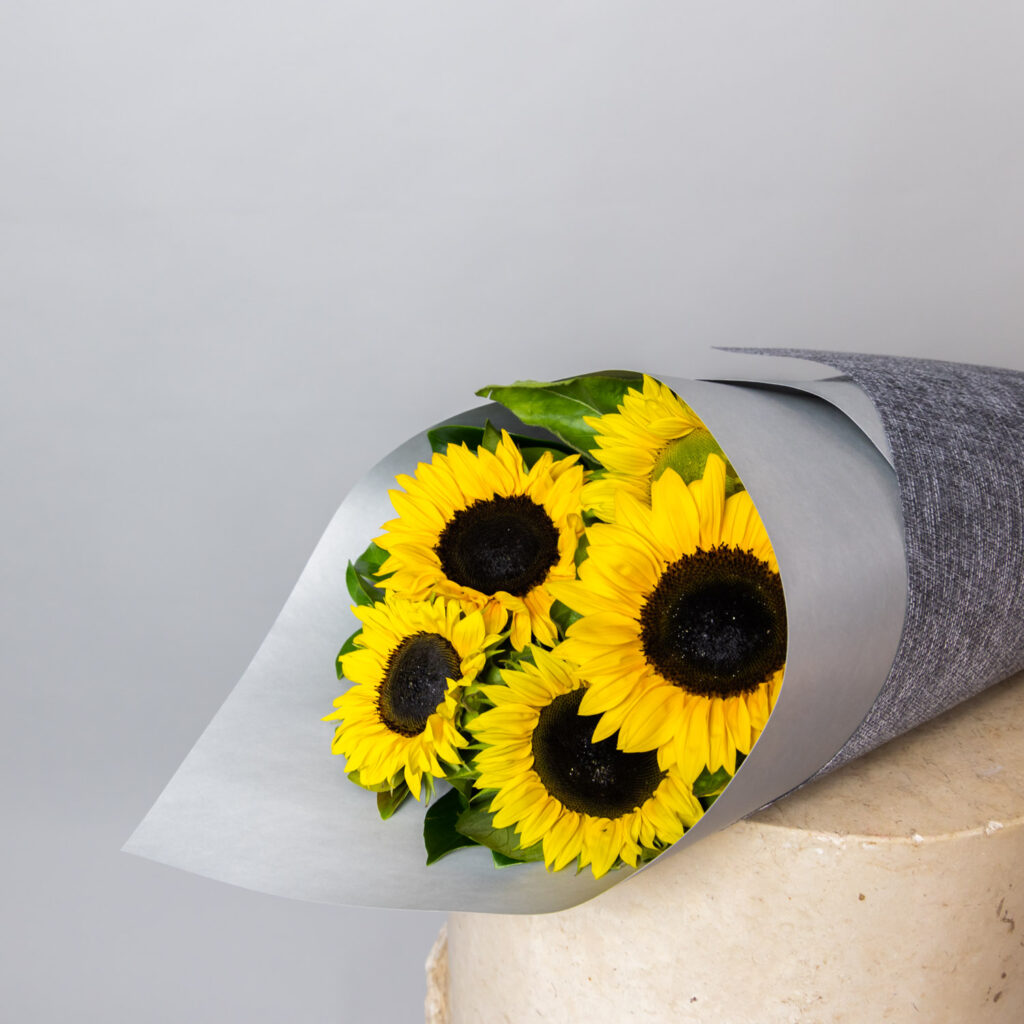Sunflowers are so familiar we almost stop seeing them: bright, open faces tracking the sun across the sky, cheerful as a roadside fruit stand. They’re the kind of flower that feels impossible to dislike—so simple and direct in their charm that we often forget they carry layers of meaning, tradition, and cultural symbolism that go well beyond their easy beauty.
If you think of sunflowers as “just happy flowers,” you’re not wrong. But you’re not getting the whole story, either. Let’s go deeper into what these golden blooms really mean—across history, art, and the language of flowers itself.
More Than a Pretty Face: A Brief History of Sunflowers
Sunflowers (Helianthus annuus) are native to North America, where they were cultivated by Indigenous peoples long before Europeans ever arrived. They weren’t grown just for decoration, but as a critical food and oil crop.
In fact, their seeds are rich in protein and healthy fats. The sunflower’s towering stalk and broad leaves also made it a natural source of shade and even structural support for companion planting. Sunflowers weren’t ornamental—they were essential.
When the Spanish carried them back to Europe in the 16th century, they became a botanical novelty, a garden showpiece, and eventually a commercial crop in their own right. But their symbolism also travelled.
Always Facing the Light: The Classic Sunflower Meaning
Most people know sunflowers for one signature move: heliotropism. Young blooms turn to follow the sun as it moves across the sky—a habit that made them synonymous with devotion, adoration, loyalty, and seeking truth.
In the Victorian language of flowers (floriography), gifting sunflowers meant admiration or “you are my sunshine.” It’s a message that’s survived into modern gifting traditions.
But there’s something even more compelling about this quality. A sunflower’s habit of seeking light has made it a symbol of optimism and resilience. No matter what’s happening around them, they turn toward what sustains them.
It’s not hard to see why people want to fill rooms—and lives—with them.
Sunflowers in Art and Culture
Of course, you can’t talk about sunflowers without talking about Van Gogh. His famous sunflower paintings were more than decorative studies of colour and form. They were deeply personal, symbolic works.
Van Gogh painted sunflowers to decorate a room for his friend and fellow artist Paul Gauguin, hoping to make him feel welcome. They became symbols of friendship, warmth, and creative hope—painted at a time when Van Gogh was battling his own darkness.
Today those paintings are among the most recognised artworks on earth. And they remind us that sunflowers are not just cheerful—they can be profound, messy, and human.
Sunflowers in Different Traditions
Different cultures have layered their own meanings onto these bright blooms.
- In Chinese culture, sunflowers are associated with long life, good fortune, and vitality. They’re sometimes given as celebratory gifts for birthdays or graduations.
- In Greek mythology, the sunflower is linked to the nymph Clytie, who turned into the flower after watching the sun god Helios endlessly—a story of unrequited love, longing, and transformation.
- In modern times, sunflowers have been used as symbols of peace, environmental movements, and even political resistance—bright, unmissable, impossible to ignore.
They’re a plant that says look here, whether you want to or not.
Gifting Sunflowers: More Than Just Cheer
When you send someone sunflowers, you’re not just giving them a bright spot in their living room. You’re saying:
- I see your strength.
- I know you keep going.
- You find the light.
- You help me find it too.
They’re perfect for celebrating milestones, cheering someone through a rough patch, or simply saying “you matter.”
They work in big, dramatic bunches or as a single stem in a tall, minimalist vase. Their size and shape mean they can be the star of an arrangement, or a bold counterpoint in a mixed bouquet.
Why We Still Love Them
Sunflowers are honest flowers. They don’t whisper or hide. They stand tall and demand to be seen. In a world that sometimes feels too clever or cynical for its own good, there’s something beautifully uncomplicated about that.
But simple doesn’t mean shallow. Sunflowers hold history, culture, art, myth, and human feeling in their golden faces.
They’re a reminder that joy can be radical. That facing the light is brave. And that even the most ordinary flower can carry extraordinary meaning.
At B&M Florist, we love working with sunflowers for all these reasons. Whether you want to brighten a friend’s day, mark a moment of personal growth, or bring a sense of warm welcome to your own space, they’re always up to the task.
If you’re curious about sending sunflowers—or using them in your next arrangement—come chat with us. We’d love to help you find the perfect way to share the light.



